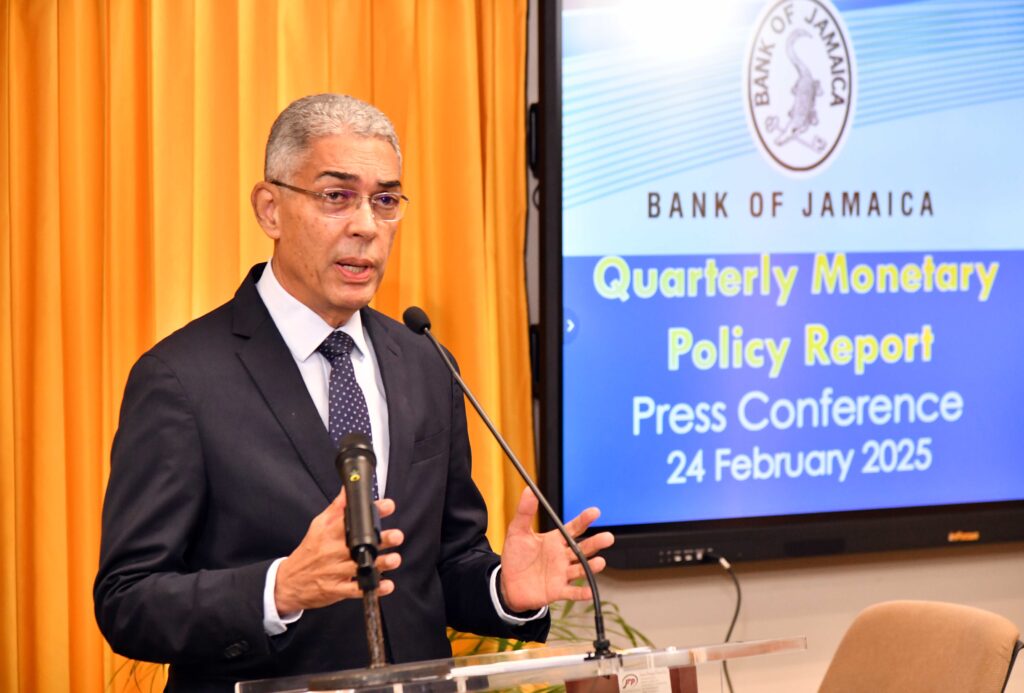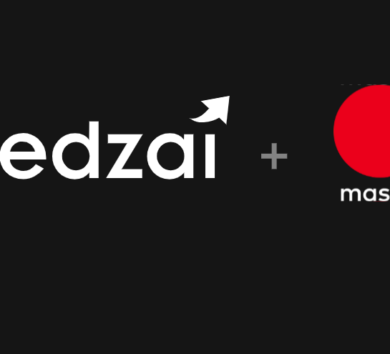

The Bank of Jamaica (BOJ) announced on Monday, February 24 that its policy rate will be maintained at six per cent per annum, a decision reached during the Monetary Policy Committee (MPC) meeting on Thursday, February 20.
This reflects the BOJ’s assessment of recent macroeconomic data and forecasts, which indicate that inflation is expected to remain within the Bank’s four to six per cent target range. Governor, Richard Byles, highlighted the factors underpinning the MPC’s decision, during Monday’s quarterly press conference.
He noted that headline inflation for January 2025 was 4.7 per cent, a significant decline from the 7.4 percentage points recorded in the corresponding period last year.
Additionally, inflation, excluding agricultural food products and fuel, has consistently remained below six per cent since July 2020.
“The MPC determined that the current level of policy rate continues to be appropriate to support inflation remaining within the Bank’s target range of four to six per cent,” Governor Byles said. Several factors contributed to the BOJ’s positive outlook, including falling inflation expectations.
Private-sector expectations of future inflation, a key driver of headline inflation, have continued to fall. The BOJ’s December 2024 survey of businesses revealed a significant decrease in inflation expectations over the next 12 months.

Additionally, the average price of grains (wheat, corn and soybeans) for the October to December 2024 quarter was approximately 15.1 per cent lower, compared to the corresponding period in 2023.
Oil prices also decreased, and inflation in the United States decelerated to 2.9 per cent in December 2024.
Additionally, the exchange rate has remained relatively stable, depreciating by just 0.3 per cent between February 19, 2024, and February 19, 2025. This is a slower pace compared to the 1.9 per cent depreciation during the same period a year earlier.
The Central Bank has supported the foreign exchange market by selling US$1.1 billion through its BOJ Foreign Exchange Intervention & Trading Tool (B- FXITT) facility over the 12 months, ending January 2025.
However, the BOJ net purchased approximately US$1.1 billion over the same period.
In the meantime, while employment levels remain high, anecdotal data suggest wage pressures are moderating. Notwithstanding, the BOJ said it remains vigilant about potential risks to the inflation forecast, primarily related to economic changes among Jamaica’s main trading partners, which could adversely affect remittance and tourism revenue inflows. Adverse weather conditions could also put upward pressure on inflation.
The Planning Institute of Jamaica (PIOJ) projects economic growth in the range of one per cent for the January to March 2025 quarter, with the BOJ forecasting that the economy will recover fully from the effects of weather-related events over ensuing quarters.
Real Gross Domestic Product (GDP) for fiscal year 2025/26 is projected to grow by between one and three per cent. Jamaica’s Gross International Reserves are healthy and projected to further improve over the next two years. At the end of January 2025, the reserves totalled US$5.6 billion, up from US$4.8 billion a year earlier.
“The Bank remains committed to ensuring that the foreign exchange market remains stable. The Bank is prepared to adjust the stance of monetary policy if the risks highlighted… materialize and impede our ability to attain the inflation target,” Governor Byles affirmed.







Comments